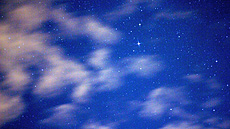Reading the heavens with your phone
 |
| Two groups have released early versions of apps to turn your smart phone into a cosmic ray detector. Photo: Craighton Miller |
Cosmic rays, most of which come speeding through the Milky Way from outside of our solar system, crash into the Earth's atmosphere at energies high enough to put the Large Hadron Collider to shame.
And all it takes to catch such an event is a smart phone.
Two groups are working on apps to turn smart phones into roving particle detectors. One group aims to educate, while the other is on a quest to create the largest cosmic ray detector array in the world.
Smart phone cameras contain sensors that help convert particles of light into the digital images that appear on your screen. Astronomers use high-powered versions of these sensors to study the light from faraway galaxies.
When a cosmic ray hits the Earth's atmosphere, it produces a shower of energetic particles that rain down on the planet. When one of those particles hits a sensor, it leaves a temporary mark — usually a single hit pixel, but sometimes a multi-pixel streak.
If these events were more common or obtrusive, they'd be the scourge of the digital photography world. As it is, it takes a little more work to find them, something the app developers are happy to do.
Justin Vandenbroucke, a physicist at the University of Wisconsin, Madison, and Levi Simons, director of citizen science at the LA Makerspace in Los Angeles, lead one group, which for the past four years has been working to build an app that teachers and students can use to create their own cosmic ray experiments. It's called DECO, Distributed Electronic Cosmic-ray Observatory.
"Instead of reading about particle interactions, students can see them on their own phones," Vandenbroucke says. "We're working with high school students to test the app, and we're working with high school teachers to develop the curriculum."
Vandenbroucke met Simons, then a physics-grad-student-turned-teacher, when they were paired together at SLAC National Accelerator Laboratory through STAR, a research experience program run through California Polytechnic State University. Their project began as an attempt to resurrect a defunct program in which students detected cosmic rays from the rooftops of schools in Southern California.
They say they envision students around the world comparing results. Young scientists in Madison and Boulder could compare data to examine the effect of altitude on cosmic ray detection. Vandenbroucke and Simons can also see students comparing their findings with magnetic field data to see if both are affected during a solar storm.
The other app-developing group has somewhat different plans.
Physicists Daniel Whiteson of the University of California, Irvine, and Michael Mulhearn of UC Davis met while working on competing experiments at Fermi National Accelerator Laboratory during grad school. They now work on competing experiments at the Large Hadron Collider at CERN.
Read more
—Kathryn Jepsen
|